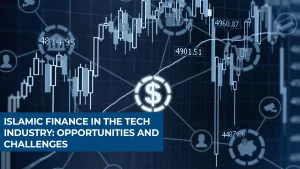In the current complex and ever-changing structure of global finance, Sukuk, which defines the Islamic bond, has become one of the key products of Islamic finance. Therefore, in the present world, digital Sukuk has evolved, hitting traditional paradigms and providing new horizons to expand potential investments. Hence, I am a top Jordanian business expert and I interprets that the Sukuk, providing the essential aspects of comparing digital Sukuk to traditional ones.
TRADITIONAL SUKUK – A TIME-HONORED APPROACH
Originally known as Conventional Sukuk, this type has been around for decades, serving as one of the key instruments of Islamic finance that does not involve interest and gharar. These financial instruments help in the asset securitization process, guaranteeing investments are backed by real assets, thereby reducing risk to unmanageable levels while at the same time supporting long-term economic growth. Since its inception, structural Sukuk has been used for infrastructure, corporate, and sovereign funding across various Muslim-dominated nations. According to the business expert, traditional Sukuk has several benefits, including widespread trust among investors who appreciate the reliability and compliance with Sharia laws in securities.
DIGITAL SUKUK – EMBRACING TECHNOLOGICAL INNOVATION
New information technologies have raised nearly all areas of business, and the field of Islamic finance is also not an exception. Digital Sukuk directs the use of blockchain technology in developing the effectiveness, clarity, and availability of the Sukuk issuing and trading markets. This innovative approach can overcome some of the main drawbacks of conventional Sukuk, such as the high cost of issuance, long-time processes, and limited outreach of the Sukuk market.
I also emphasize this rationale by elaborating on the role of digital Sukuk in initiating the changes for Islamic finance to be accessible to every common man. Digital sukuk, with low transaction costs and efficient processes, can accommodate more investors than before, particularly those who were locked out because of geographical or financial barriers.
COMPARATIVE DYNAMICS AND FUTURE PROSPECTS
It is important to understand that there are various differences between conventional and electronic Sukuk. Before shifting to more advanced concepts about Sukuk, it is good to understand that traditional Sukuk is a safe way of investing that has regulatory compliance. But it might not sustain the pace set by the modern world that is quickly turning to digitalize its activities.
On the other hand, the idea of digital Sukuk is more progressive, as it reflects the general tendency of the world economy to transition to the digital level. Due to its simplicity, lower cost, and higher degree of openness, it is rather attractive, for instance, to the younger generation of investors who are used to working with electronic equipment. Even though digital Sukuk has huge potential, it also needs strict rules and regulation mechanisms to adhere to Sharia laws and avoid various associated risks.
FINAL WORDS
Therefore, based on the analysis of the differences between digital and traditional Sukuk, it is possible to observe that there are still connections between the traditions and innovations. The range of Traditional Sukuk remains as being pointed as a cornerstone and repository of Islamic finance with stability and credibility. On the other hand, digital Sukuk is part of the future as the world embraces technology to address the challenges of financial markets; in elaborating on the structure of coexistence and interaction of both types of Sukuk, I pointed out, effectiveness, stability, and integration of Islamic financial systems call for the interconnection of both types of Sukuk in the future.
Visit my https://drraedelomari.com/ for any queries or insights. As a Jordanian business expert, I am here to help you navigate the complexities of the business world. Contact me today, and let’s work together to achieve sustainable growth in different industries.






